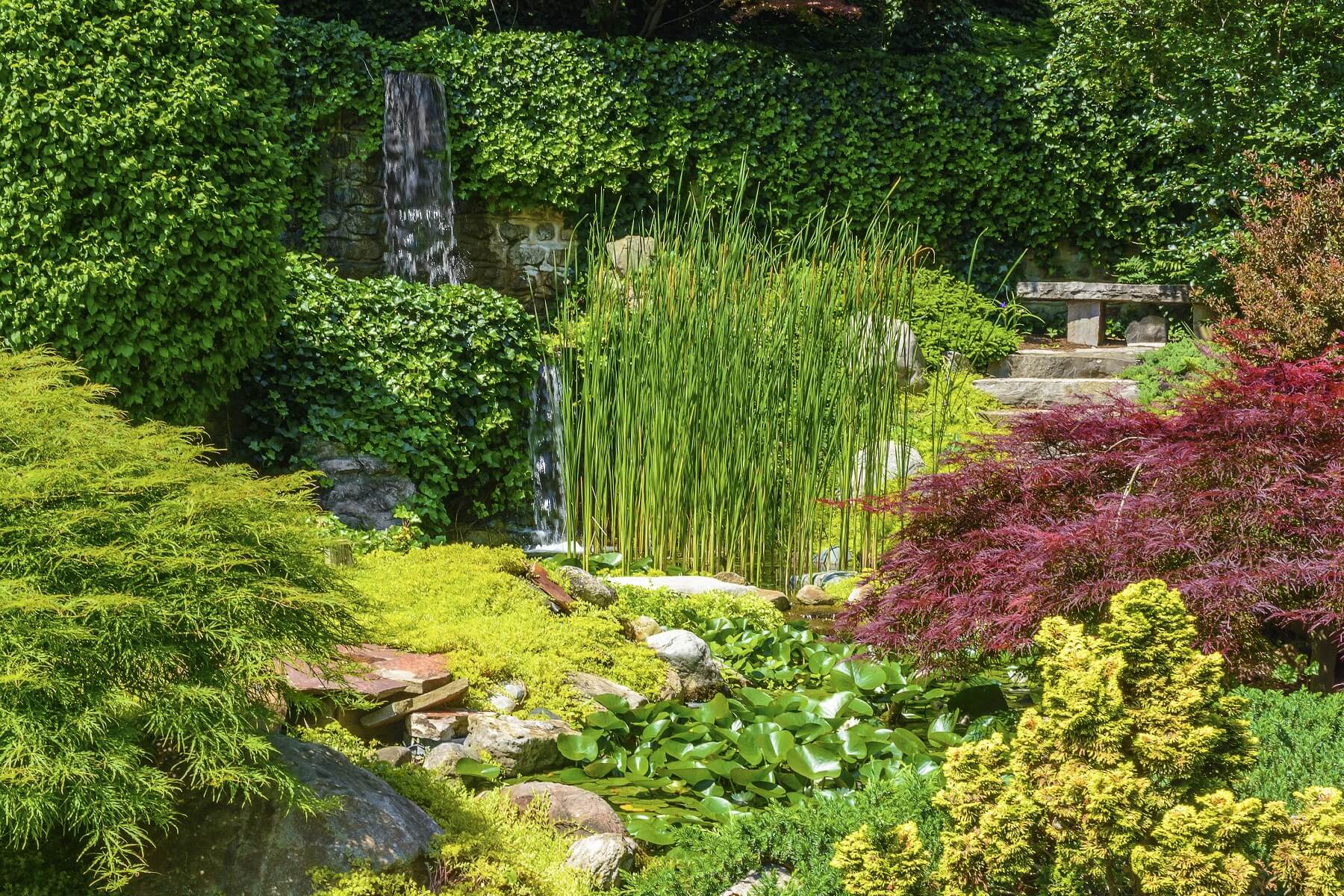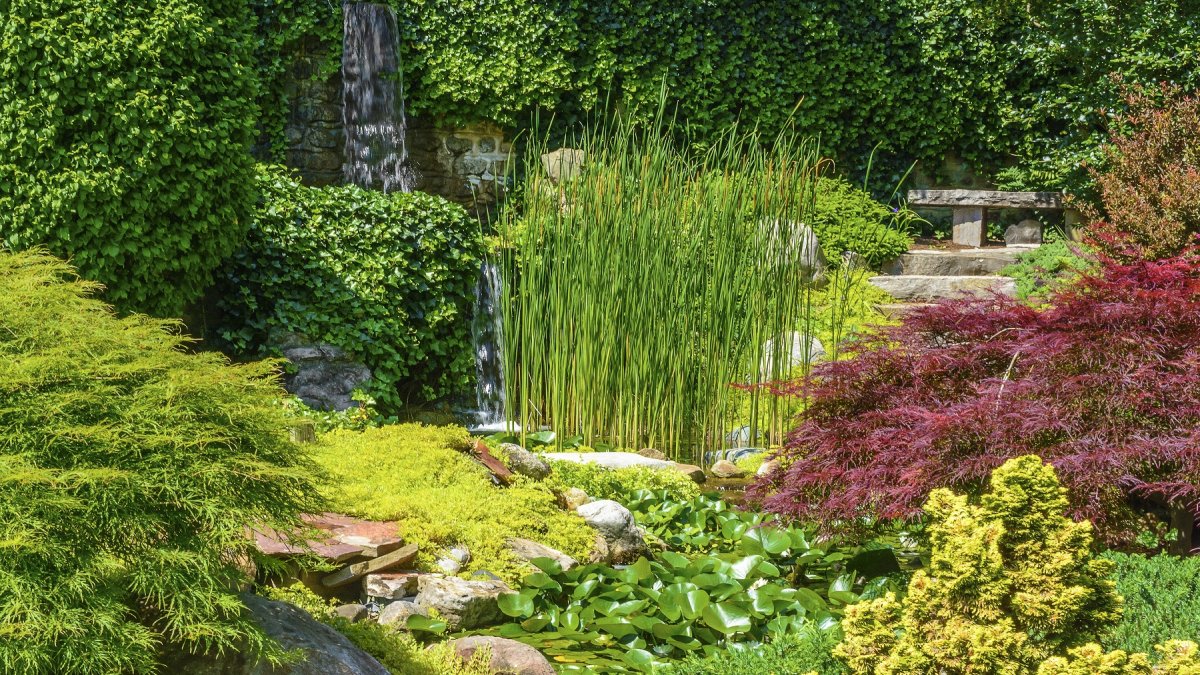
The British garden, a veritable oasis of calm and tranquillity, serves as a sanctuary where one can escape from the hustle and bustle of daily life. The marriage of colour, texture, and scent, skillfully intertwined, can provide a symphony of delight for the senses. This alluring spectacle doesn’t happen by chance; it’s the result of carefully chosen plants, shrubs, trees, and grasses, each one selected to thrive in its given environment.
The Influence of Weather, Climate and Light Conditions
Britain’s diverse range of climatic conditions can heavily influence your choice of greenery. Coastal regions, for instance, require wind-tolerant, salt-resistant species, while gardens in the North may need hardy varieties that can withstand cold temperatures. Understanding your specific climate is fundamental when selecting the right plants, shrubs, and trees.
When it comes to light conditions, the orientation of your garden can have a substantial impact. South-facing gardens receive ample sunlight, thus favouring sun-loving plants. Meanwhile, north-facing gardens, often in the shade, necessitate shade-tolerant species.
In the UK, we also have a rich variety of soil types ranging from heavy clay to sandy, loamy, or chalky. Each soil type has its benefits and challenges. For instance, clay soils retain moisture and nutrients but drain slowly and can be hard to work. Sandy soils, on the other hand, drain quickly but may not retain nutrients well. They’re easier to work with but need additional compost or organic matter to enhance their fertility. You can perform a simple jar test at home to understand your soil type. This involves collecting a soil sample, placing it in a clear jar with water, shaking it well, and letting it settle. Different soil components will settle in layers, revealing the composition of your soil.
Drainage conditions are another crucial aspect. Areas of your garden may have excellent drainage, while others may be prone to waterlogging. You might need to amend the soil in these areas or choose plants that can thrive in waterlogged conditions.
Choosing the Right Grass and Turf for Your Space
Let’s now focus on the carpet of your outdoor canvas: the grass. The choice of turf is crucial as it sets the stage for your blossoming theatre of flora.
There are many factors to consider when selecting the appropriate grass. Consider the usage – will there be children playing or pets frolicking, or is it simply for aesthetic appeal? The chosen turf should align with your lifestyle requirements.
There are various types of turf to choose from, each offering its unique blend of characteristics. For example, fine turf, often used for bowling greens or golf courses, provides a beautiful, dense, and uniform sward but requires careful maintenance. On the other hand, utility turf is hard-wearing and withstands the rigours of high traffic, making it perfect for a family garden. It’s easy to buy turf online, so you should be able to find a solution that offers the best of both worlds, consider investing in a mixed turf. Mixed turfs offer an ideal balance between aesthetic appeal and practical resilience, ensuring your lawn can endure frequent use while maintaining its lush, green appearance.
Remember, always opt for high-quality turf from a reputable supplier. Consider purchasing turf rolls online from a well-known provider to ensure premium quality.
A Well-Balanced Selection of Plants
Creating a balance within your garden space is critical to its overall appeal and longevity. It’s important to remember that your garden is a living, breathing entity that changes with the seasons, and your plant selection should reflect this ebb and flow.
Start with the backbone of your garden – the perennials. They provide structure and continuity, coming back year after year. Some perennials, such as geraniums and hostas, also offer attractive foliage that can fill out your garden and provide interest even when the plants aren’t in bloom.
The charm of the annuals, despite their short life span, is the vibrancy and variety they bring. Filling gaps in borders, they can provide a burst of colour throughout the summer. Cosmos, marigolds and pansies are all excellent choices that thrive in the British climate.
But perhaps the stars of the show are the flowering plants. They provide that wow factor, the dazzling display of colours and scents that can transform a garden into a sensory feast. If you want to create a spectacle that changes throughout the year, select flowers with different blooming times.
Spring-flowering bulbs like daffodils and tulips kick-start the year with their vibrant hues, followed by the irises and peonies in late spring. For the summer, consider roses for their classic beauty and scent, and hydrangeas for their large, showy blooms. Late summer and autumn can shine with dahlias, asters and rudbeckias.
For shady spots, consider shade-loving flowers like bleeding hearts and astilbes, both of which offer vibrant blooms. For sunny areas, you might want to choose sun-loving flowers such as lavender or salvia, which also attract pollinators.
Keep in mind the colour combinations in your garden. Monochromatic gardens can be just as stunning as those bursting with colour. A white and green garden, for example, offers a calming, sophisticated space. Alternatively, you could go for a cottage garden style, with a profusion of colours and plant types intermingling.
Remember, diversity is key. A garden thrives on a mixture of plant types. Selecting plants of varying heights, bloom sizes and foliage types can add depth and character to your space. They can also attract a diverse range of wildlife, transforming your garden into a miniature nature reserve.
Final Thoughts
Creating a harmonious garden, one that effortlessly blends the beauty of nature with your aesthetic vision, is a rewarding endeavour. Remember to consider your garden’s unique characteristics, such as its climate and light conditions, and choose your plants, shrubs, trees, and turf accordingly. The result will be a splendid display of nature’s artistry, a garden that brings joy throughout the seasons.
Emily Hawthorne
Related posts
Stay connected
- How LoveOn Chat Is Becoming the Most Versatile AI Companion for Digital UsersThe internet keeps shifting toward hyper-personal interaction, and AI companions are at the center of this shift. What used to be simple chatbots are now evolving into emotionally aware, adaptive, and multi-functional digital partners. Among the new generation of platforms, LoveOn Chat is becoming one... The post How LoveOn Chat Is Becoming the Most Versatile […]

